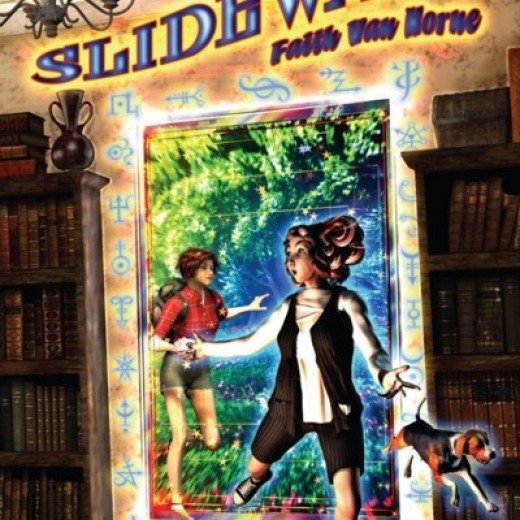Playing Dress Up: Judge Your Characters by Their Covers by Wyatt Bessing
 Welcome back to another one of Writer’s Fun Zone’s monthly columnists: Wyatt Bessing. A writing coach and teacher, author, Wyatt Bessing shares his fun take on games, play, and how they help our writing. This month Wyatt helps us judge our characters by their covers and encourages you to play dress up. Enjoy!
Welcome back to another one of Writer’s Fun Zone’s monthly columnists: Wyatt Bessing. A writing coach and teacher, author, Wyatt Bessing shares his fun take on games, play, and how they help our writing. This month Wyatt helps us judge our characters by their covers and encourages you to play dress up. Enjoy!
***
Clothes can give your reader an important first impression of your character. Sometimes they can even convey deep messages about a character’s personality, status, memories, or ambitions in life. As always when using description, use this kind of characterization sparingly. A little clothing detail goes a long way, and no reader wants to read an entire paragraph of brand names or colors of a character’s wardrobe. A single item of clothing can stand for so much more.
In Kate DiCamillo’s wonderful novel The Magician’s Elephant, our protagonist, Peter, is described in the first lines as “a boy with a hat on his head and a coin in his hand.” We soon learn that his hat is a soldier’s hat. This hat becomes a symbol of the boy’s ambitions and his virtue, a virtue that will be tested again and again.
What can your character’s clothing tell us about him or her at a deep level?
For this game, you’ll need a single six-sided die.
First, roll once on this chart to determine the article of clothing.
1. top/shirt
2. pants/skirt/dress
3. eyewear
4. jewelry
5. shoes
6. underwear
Next, describe this article of clothing completely in a paragraph, suggesting the type of clothing and its symbolic importance to your character. Note: This paragraph will not go into your fiction. Instead, put it on a reference card so you can draw on it as your character acts within your story. As with all your character notes, you’ll want to embed these details deep in the souls and memories of your characters, so that they spring forth naturally in the course of events. Don’t overload the reader with this kind of exposition.
I rolled a 5, so my character’s shoes have something important to tell us. In my work-in-progress, Wade is a ghost hunter, but he keeps this occupation secret from his parents. Each night, after tromping through the grass and getting ectoplasm all over his shoes, he carefully washes them off in the bathroom before his parents awaken. Sometimes he’s so tired from his long nights that he imagines leaving splotches of goo on the white bathroom carpet. But he makes sure his shoes are absolutely clean in the morning. In fact, the shoes are always so clean that his parents begin to suspect something strange is going on. The shoes are a symbol of his secret and of his dual identity, clean and normal by day, dark and dirty by night.
Finally, you’re going to use this item’s description and put it into action. This one you might put directly into your story. In a scene in which your article of clothing plays a symbolic role, give your character one of the following emotions:
1. anger
2. joy
3. worry
4. lust
5. confusion
6. sadness
(I rolled a 2… joy.)
I smiled broadly as I came to the end of the Navy Treasure story.
I could see that Teddy and Mark were enthralled by my tale. Mark’s usually finger-tapping had fallen silent, his head cupped in his hands as he watched me with wide eyes. Teddy was lying back on the floor pillow, gazing up through the hole in the ceiling of the tree house, watching the North Star twinkling.
I walked dramatically to the edge of the platform and gestured down at the tree.
“So, the gold was buried beneath a tree very much like this one, the whole time,” I concluded.
“Wow,” said Teddy.
“Cool,” said Mark. “Great story. Let’s go look for the gold!”
“But it’s fiction,” I said.
“Yeah, you don’t want to come with us anyway,” said Mark. “You don’t want to get your shoes dirty!”
He pointed at my shoes, perched at the edge of the platform overlooking the yard, spotlessly clean as always. If only he knew where I would go in those shoes later that night.
***
 Wyatt Bessing is a writer, writing coach, and learning specialist. His stories and essays have appeared in Bedtime-Story.com, Outsider Ink, national educational assessment materials, and in the anthology Dance, Human Rights, and Social Justice. Through his workshops, website, and blog at wyattgbessing.com, he guides new and experienced writers in crafting more effective, expressive, and striking work. During the day, he works at Star Academy in San Rafael, teaching reading and comprehension skills to students with learning differences in elementary through high school. He lives in Santa Rosa, CA with his wonderful fiance and co-creator, Sarah Laugtug.
Wyatt Bessing is a writer, writing coach, and learning specialist. His stories and essays have appeared in Bedtime-Story.com, Outsider Ink, national educational assessment materials, and in the anthology Dance, Human Rights, and Social Justice. Through his workshops, website, and blog at wyattgbessing.com, he guides new and experienced writers in crafting more effective, expressive, and striking work. During the day, he works at Star Academy in San Rafael, teaching reading and comprehension skills to students with learning differences in elementary through high school. He lives in Santa Rosa, CA with his wonderful fiance and co-creator, Sarah Laugtug.






